Abstract
The two major components of reliability are accuracy and reproducibility. Three studies of the reliability of height measurement in children are reported. In the first, a standard metre rod was used to spot check the accuracy of installation of 230 measuring instruments in one health district in Wessex, UK. The readings obtained ranged from 90.0 to 108.5 cm and showed the urgent need for the positioning of instruments to be regularly checked. In a second study, to examine the reproducibility of height measurement, two experienced observers measured 10 young children (106.0 to 152.0 cm), three times on five instruments of different design. The observations were blind and in random order. The estimated standard deviation for a single height measurement was generally in the range 0.2-0.3 cm. Over 95% of the variance was attributable to the child, very little to the instrument or observer. Finally, the conditions of the second study were modified to examine the effect on reproducibility of non-blind and non-randomised measurements, as usually occurs in the clinic. A lower but inevitably false estimate of the error was obtained. It is recommended that the error of height measurement, appropriately established and expressed in simple terms, be stated in every published growth study.
Full text
PDF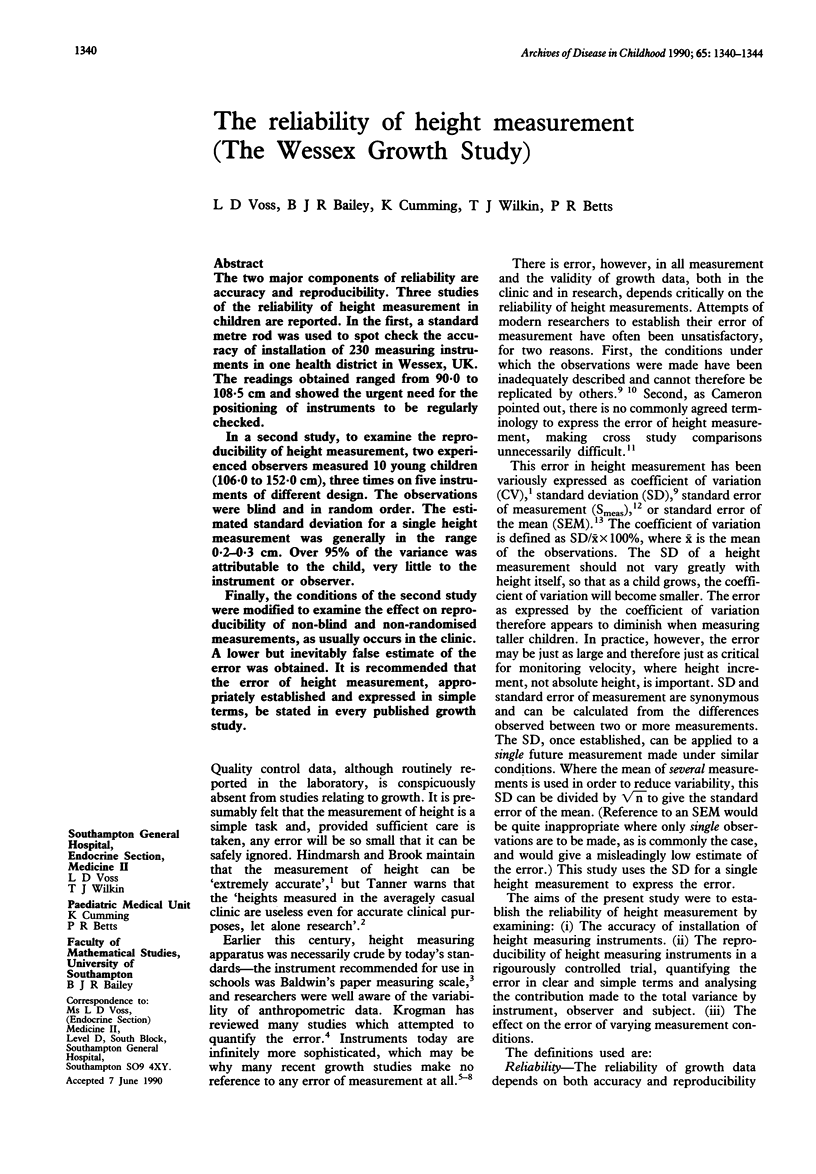
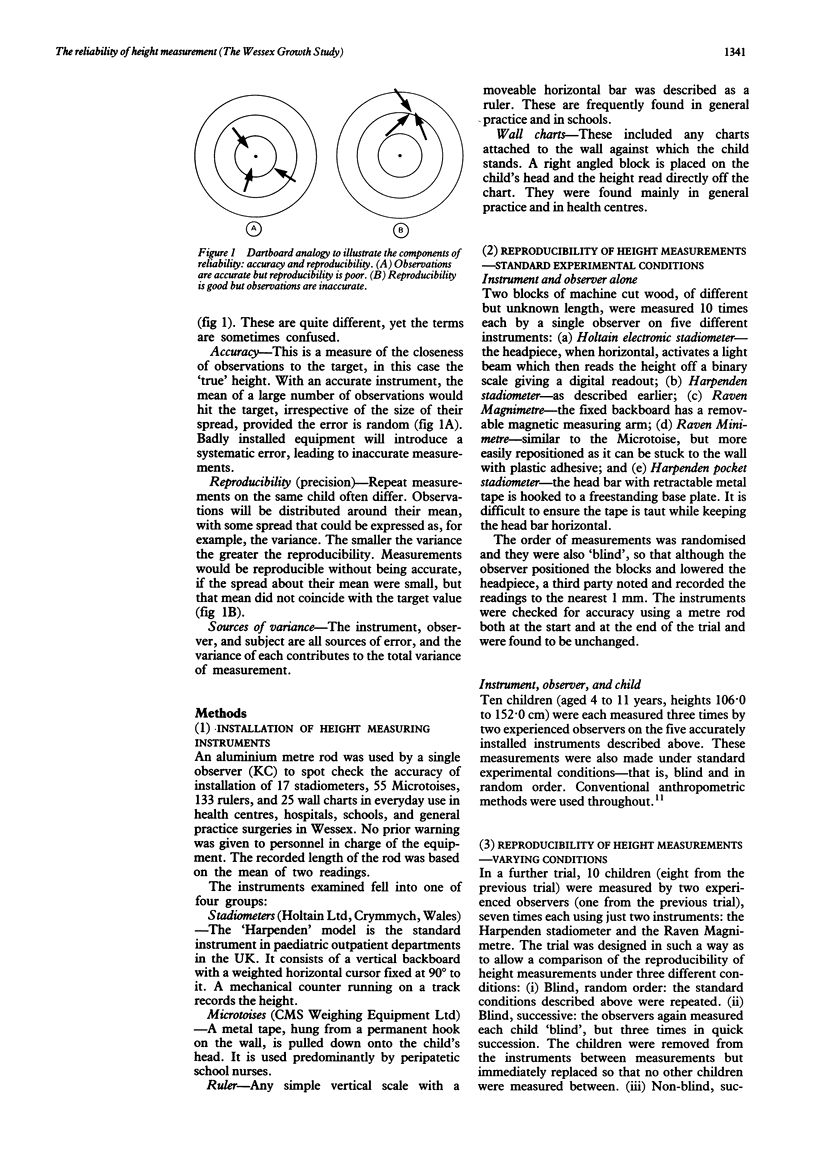
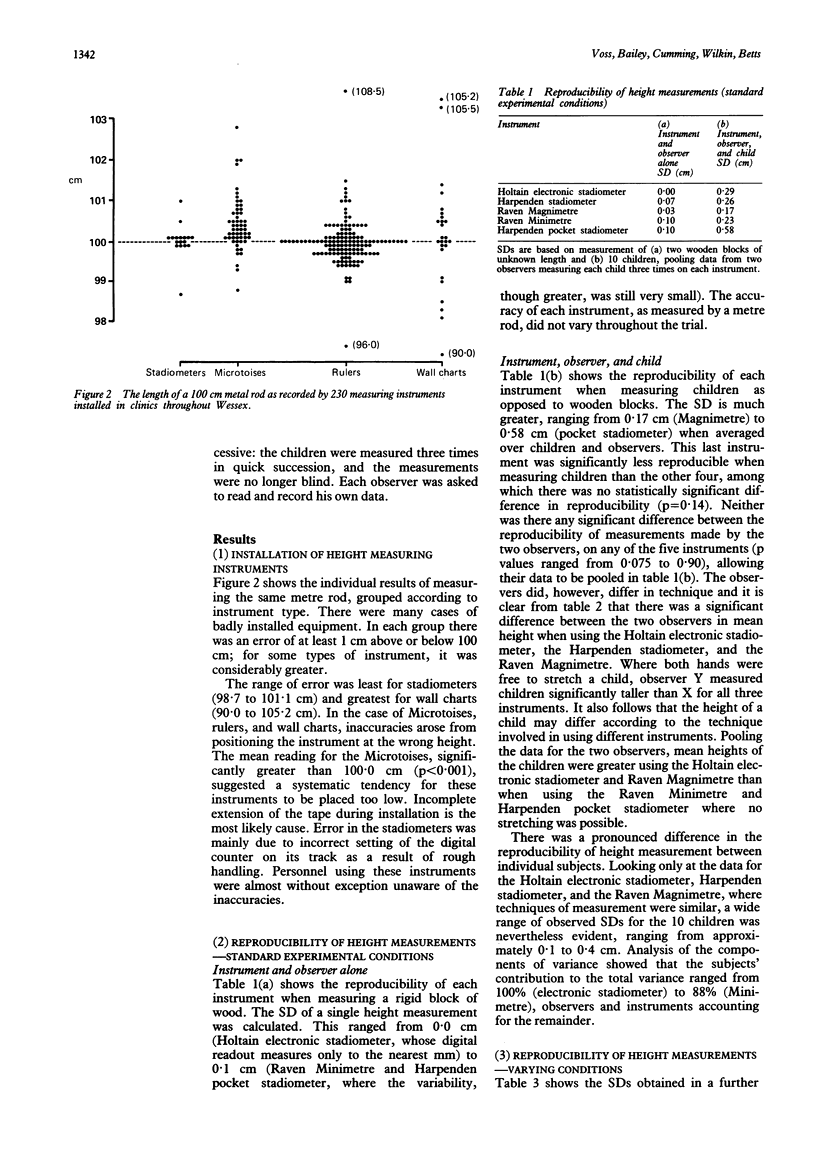
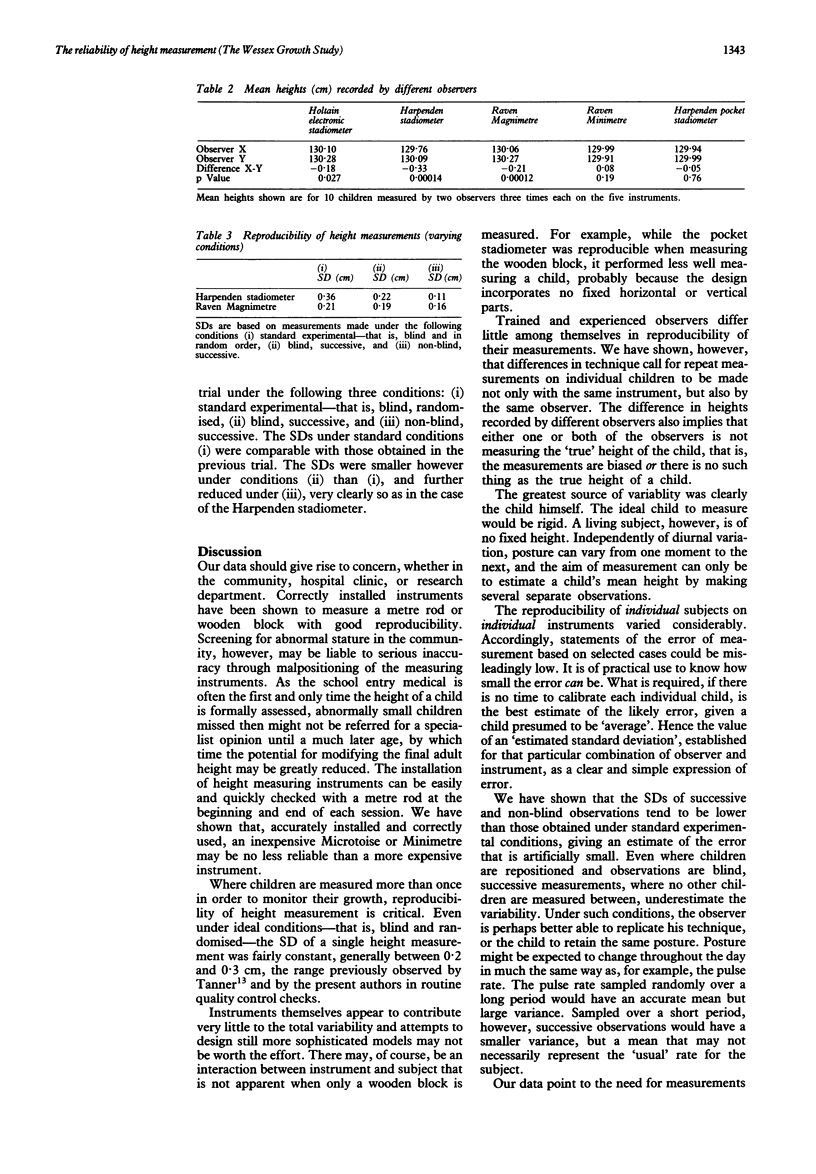
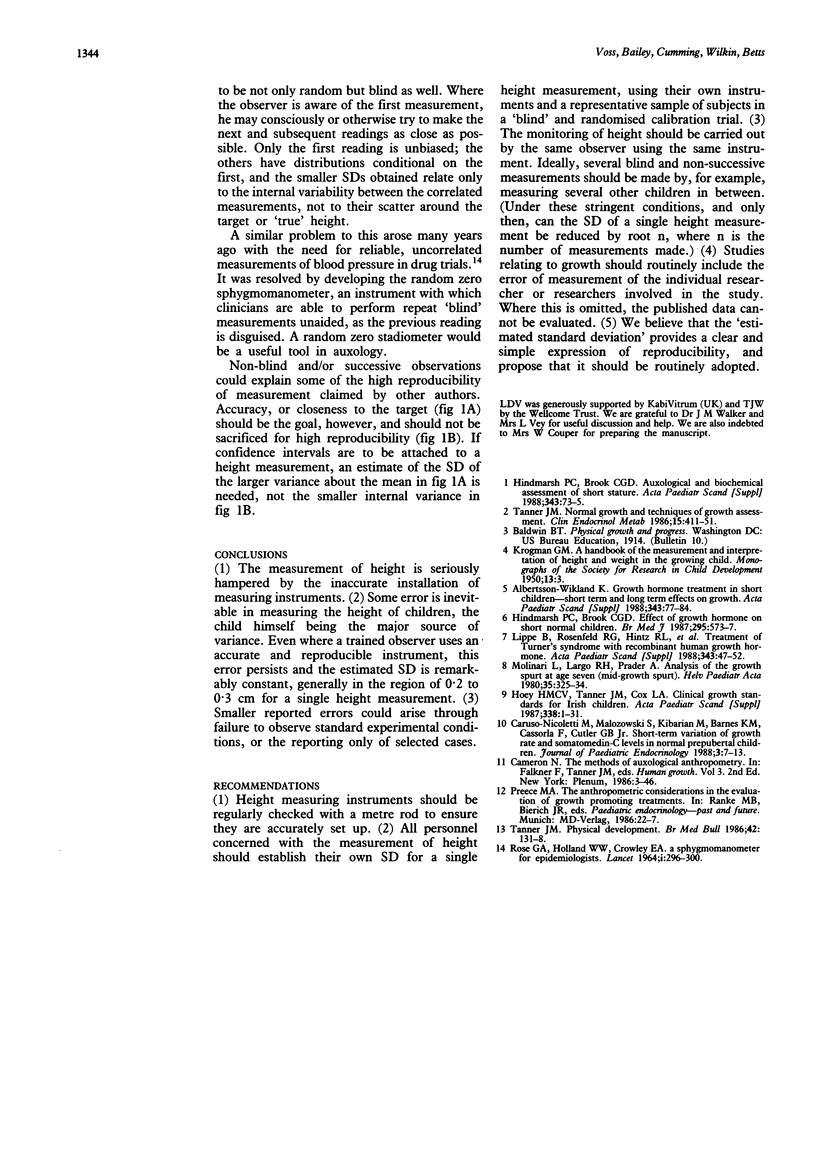
Selected References
These references are in PubMed. This may not be the complete list of references from this article.
- Albertsson-Wikland K. Growth hormone treatment in short children--short-term and long-term effects on growth. Acta Paediatr Scand Suppl. 1988;343:77–84. doi: 10.1111/j.1651-2227.1988.tb10805.x. [DOI] [PubMed] [Google Scholar]
- Hindmarsh P. C., Brook C. G. Effect of growth hormone on short normal children. Br Med J (Clin Res Ed) 1987 Sep 5;295(6598):573–577. doi: 10.1136/bmj.295.6598.573. [DOI] [PMC free article] [PubMed] [Google Scholar]
- Hoey H. M., Tanner J. M., Cox L. A. Clinical growth standards for Irish children. Acta Paediatr Scand Suppl. 1987;338:1–31. doi: 10.1111/j.1651-2227.1987.tb10580.x. [DOI] [PubMed] [Google Scholar]
- Lippe B., Rosenfeld R. G., Hintz R. L., Johanson A. J., Frane J., Sherman B. Treatment of Turner's syndrome with recombinant human growth hormone (somatrem). Acta Paediatr Scand Suppl. 1988;343:47–52. doi: 10.1111/j.1651-2227.1988.tb10800.x. [DOI] [PubMed] [Google Scholar]
- Molinari L., Largo R. H., Prader A. Analysis of the growth spurt at age seven (mid-growth spurt). Helv Paediatr Acta. 1980 Sep;35(4):325–334. [PubMed] [Google Scholar]
- ROSE G. A., HOLLAND W. W., CROWLEY E. A. A SPHYGMOMANOMETER FOR EPIDEMIOLOGISTS. Lancet. 1964 Feb 8;1(7328):296–300. doi: 10.1016/s0140-6736(64)92408-0. [DOI] [PubMed] [Google Scholar]
- Tanner J. M. Childhood epidemiology. Physical development. Br Med Bull. 1986 Apr;42(2):131–138. doi: 10.1093/oxfordjournals.bmb.a072110. [DOI] [PubMed] [Google Scholar]
- Tanner J. M. Normal growth and techniques of growth assessment. Clin Endocrinol Metab. 1986 Aug;15(3):411–451. doi: 10.1016/s0300-595x(86)80005-6. [DOI] [PubMed] [Google Scholar]


